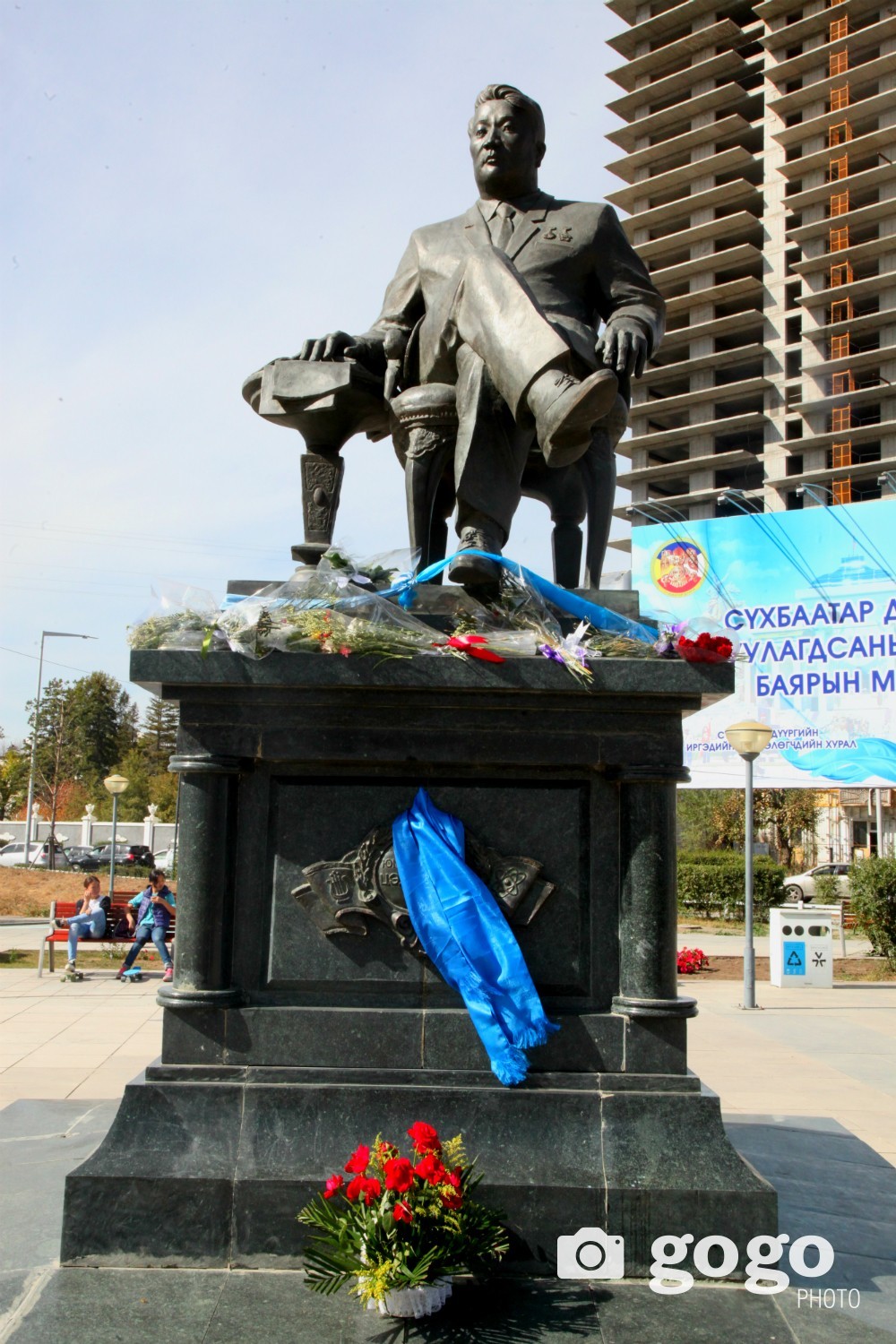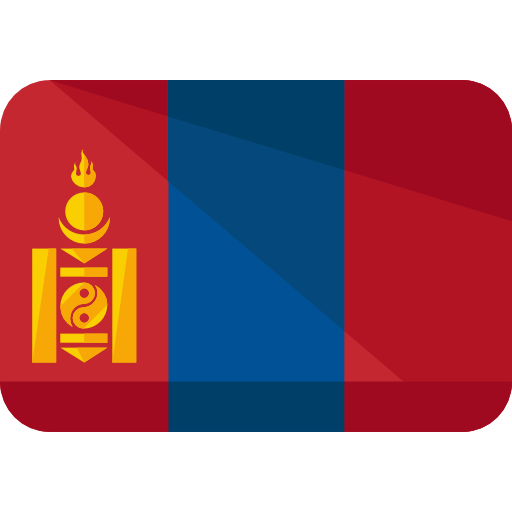I thought that there is no person who does not recognize Tsedenbal Yumjaa, the former leader of Mongolia who ruled for 44 years. However, it was not.
I went to the monument for shooting and met with eight grade two boys. "Whose statue is it?", I asked. They responded that "We do not know. Maybe a great man."
I thought that they would know the person instead of monument and said "It is the monument of Yu.Tsedenbal." However, they said "Who is Tsedenbal?"
There is no need to blame somebody for the boys who did not know the son of Yumjaa and former leader of Mongolia, Tsedenbal. I wanted to let other boys and girls know briefly about him.
Let's say one example. Today, there is no child in USA who does not know their first president George Washington. However, they may not know their 28th president Thomas Woodrow Wilson.
I have an another example. The President of Kazakhstan Nursultan Nazarbayev who has been the country's leader since 1989 was known in the world today. However, it is meaningless if the children do not know this man after 20 years of his death.
Therefore, Mongolian children could not be a stranger to the most prominent public figure of Mongolia like the first president of the United States and a great gentleman have developed Kazakhstan.
Tsedenbal was born to an ethnic Dorvod poor nomadic family in Zorigt Khan hoshuu of the Unen Zorigt Khan aimag (present day Davst soum in Uvs aimag). He was the fifth of eleven children in his family (three of his siblings died in infancy).
In 1925 Tsedenbal became among the first students in the newly organized public school in Ulaangom, graduating in 1929. The same year Tsedenbal went to Irkutsk to continue his education. He spent about nine years between Irkutsk and Ulan-Ude. He obtained a degree from the Siberian Finance and Economics Institute.
In 1939, having returned to Ulaanbaatar, Tsedenbal worked first as a deputy minister and then as a minister of finance. In 1940, at the 10th Congress of the Mongolian People's Revolutionary Party, he became the party's General Secretary at age 23.
After taking over premiership in 1952 with Marshal Khorloogiin Choibalsan`s death, Tsedenbal successfully purged his political rivals: Dashin Damba in 1958–59, Daramyn Tomor-Ochir in 1962, Luvsantserengiin Tsend in 1963, and the so-called Lookhuuz-Nyambuu-Surmaajav "anti-party group" in December 1964. He held this office until 11 June 1974, when he became head of state.
His foreign policy was marked by efforts to bring Mongolia into ever-closer cooperation with the USSR. Still, Tsedenbal and his group of party leaders (such as Tsagaan-Lamyn Dugersuren and Damdinjavyn Maidar) were dissatisfied with the economic role that the Soviet leadership assigned to Mongolia. While the USSR prodded the Mongolian government to concentrate its efforts on the development of agriculture and the mineral sector, Tsedenbal and his followers sought to foster rapid industrialization even in the face of Soviet opposition. At the same time, Tsedenbal was cautious enough to frequently express his loyalty to the Kremlin and portray his intra-party critics—including Daramyn Tömör-Ochir, Tsogt-Ochiryn Loohuuz, and others—as "pro-Chinese factionalists" and "nationalists."

With the full backing of the Soviets, Tsedenbal successfully purged his political opponents. It is said that during his time as head of the state, Tsedenbal submitted requests for the incorporation of Mongolia into the USSR on five to eight occasions, but these proposals were invariably rejected by the Soviet leaders. It is possible, however, that Tsedenbal's requests for incorporation were not made in earnest but served only manipulative purposes. At the time of the Sino-Soviet split , Tsedenbal decisively sided with the Soviet Union and incurred China's wrath. In Mongolia, Tsedenbal is remembered for successfully maintaining a path of relatively moderate socialism during the Cold War.
Tsedenbal was forced into retirement in August 1984 in a Soviet-sponsored move, officially on the account of his old age and mental weakness but at least partly because of his opposition to the process of Sino-Soviet rapprochement that had started with Leonid Brezhnev's Tashkent speech in March 1982. Jambyn Batmonh became the general secretary of the MPRP. Tsedenbal remained in Moscow until his death; his body was brought to Mongolia, where it was buried.
His Russian wife, Anastasia Ivanovna Filatova, was often said to be the most powerful political figure in Mongolia due to her close relationship with the Soviet leader Leonid Brezhnev.
After his death, front yard of the State Drama Theatre was named after Yu.Tsedenbal and his monument was erected at the front yard of the State Drama Theatre.
I thought that there is no person who does not recognize Tsedenbal Yumjaa, the former leader of Mongolia who ruled for 44 years. However, it was not.
I went to the monument for shooting and met with eight grade two boys. "Whose statue is it?", I asked. They responded that "We do not know. Maybe a great man."
I thought that they would know the person instead of monument and said "It is the monument of Yu.Tsedenbal." However, they said "Who is Tsedenbal?"
There is no need to blame somebody for the boys who did not know the son of Yumjaa and former leader of Mongolia, Tsedenbal. I wanted to let other boys and girls know briefly about him.
Let's say one example. Today, there is no child in USA who does not know their first president George Washington. However, they may not know their 28th president Thomas Woodrow Wilson.
I have an another example. The President of Kazakhstan Nursultan Nazarbayev who has been the country's leader since 1989 was known in the world today. However, it is meaningless if the children do not know this man after 20 years of his death.
Therefore, Mongolian children could not be a stranger to the most prominent public figure of Mongolia like the first president of the United States and a great gentleman have developed Kazakhstan.
Tsedenbal was born to an ethnic Dorvod poor nomadic family in Zorigt Khan hoshuu of the Unen Zorigt Khan aimag (present day Davst soum in Uvs aimag). He was the fifth of eleven children in his family (three of his siblings died in infancy).
In 1925 Tsedenbal became among the first students in the newly organized public school in Ulaangom, graduating in 1929. The same year Tsedenbal went to Irkutsk to continue his education. He spent about nine years between Irkutsk and Ulan-Ude. He obtained a degree from the Siberian Finance and Economics Institute.
In 1939, having returned to Ulaanbaatar, Tsedenbal worked first as a deputy minister and then as a minister of finance. In 1940, at the 10th Congress of the Mongolian People's Revolutionary Party, he became the party's General Secretary at age 23.
After taking over premiership in 1952 with Marshal Khorloogiin Choibalsan`s death, Tsedenbal successfully purged his political rivals: Dashin Damba in 1958–59, Daramyn Tomor-Ochir in 1962, Luvsantserengiin Tsend in 1963, and the so-called Lookhuuz-Nyambuu-Surmaajav "anti-party group" in December 1964. He held this office until 11 June 1974, when he became head of state.
His foreign policy was marked by efforts to bring Mongolia into ever-closer cooperation with the USSR. Still, Tsedenbal and his group of party leaders (such as Tsagaan-Lamyn Dugersuren and Damdinjavyn Maidar) were dissatisfied with the economic role that the Soviet leadership assigned to Mongolia. While the USSR prodded the Mongolian government to concentrate its efforts on the development of agriculture and the mineral sector, Tsedenbal and his followers sought to foster rapid industrialization even in the face of Soviet opposition. At the same time, Tsedenbal was cautious enough to frequently express his loyalty to the Kremlin and portray his intra-party critics—including Daramyn Tömör-Ochir, Tsogt-Ochiryn Loohuuz, and others—as "pro-Chinese factionalists" and "nationalists."

With the full backing of the Soviets, Tsedenbal successfully purged his political opponents. It is said that during his time as head of the state, Tsedenbal submitted requests for the incorporation of Mongolia into the USSR on five to eight occasions, but these proposals were invariably rejected by the Soviet leaders. It is possible, however, that Tsedenbal's requests for incorporation were not made in earnest but served only manipulative purposes. At the time of the Sino-Soviet split , Tsedenbal decisively sided with the Soviet Union and incurred China's wrath. In Mongolia, Tsedenbal is remembered for successfully maintaining a path of relatively moderate socialism during the Cold War.
Tsedenbal was forced into retirement in August 1984 in a Soviet-sponsored move, officially on the account of his old age and mental weakness but at least partly because of his opposition to the process of Sino-Soviet rapprochement that had started with Leonid Brezhnev's Tashkent speech in March 1982. Jambyn Batmonh became the general secretary of the MPRP. Tsedenbal remained in Moscow until his death; his body was brought to Mongolia, where it was buried.
His Russian wife, Anastasia Ivanovna Filatova, was often said to be the most powerful political figure in Mongolia due to her close relationship with the Soviet leader Leonid Brezhnev.
After his death, front yard of the State Drama Theatre was named after Yu.Tsedenbal and his monument was erected at the front yard of the State Drama Theatre.


